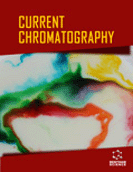[1]
Kovats’ retention index system.Cazes, J., Ed.; Encyclopedia of
Chromatography, 3rd ed.; Taylor & Francis. N.Y.,, 2010, 2, pp.1304-1310.
[3]
Kovats, E. Gas chromatographische characterisierung organischer verbindungen. Helv. Chim. Acta, 1958, 41, 1915-1931.
[4]
Fieser, L.F.; Fieser, M. Advanced Organic Chemistry, 1st ed; Reinhold Publ. Corp.: N.Y., USA, 1961.
[5]
Zenkevich, I.G. Dependence of gas chromatographic retention indices on dynamics characteristics of molecules. J. Phys. Chem. A (Rus.), 1999, 73(5), 905-910.
[6]
Zenkevich, I.G.; Marinichev, A.N. Comparison of the topological and dynamic characteristics of molecules for calculating retention indices of organic compounds. Rus. J. Struct. Chem., 2001, 42(5), 747-754.
[7]
Zenkevich, I.G.; Kostikov, R.R. Prediction of gas-chromatographic elution sequence of diastereomers and enantiomers using the molecular dynamics methods. Russ. J. Org. Chem., 2003, 39(8), 1057-1063.
[8]
Todua, N.G.; Camara, J.E.; Murray, J.A.; Mikaia, A.I. Stepwise extraction, chemical modification, GC-MS separation, and determination of amino acids in human plasma. Sep. Sci. Plus, 2018, 1, 177-189.
[9]
Todua, N.G.; Zenkevich, I.G.; Mikaia, A.I. In: Peculiar behavior of N-alkoxycarbonyl derivatives of simplest amino acid methyl esters under GC-MS analysis, 66th ASMS Conference on Mass Spectrom& Allied Topics, San-Diego, USA, July 3-7; , 2018.
[10]
Zaikin, V.; Halket, J. A Handbook of Derivatives for Mass Spectrometry; IM Publ.: Chichester, 2009.
[11]
Zampolli, M.G.; Basaglia, G.; Dondi, F.; Sternberg, R.; Szopa, C.; Pietrogrande, M.C. Gas chromatography - mass spectrometry analysis of amino acid enantiomers as methyl chloroformate derivatives: Application to space analysis. J. Chromatogr. A, 2007, 1150, 162-172.
[12]
Villas-Boas, S.G.; Delicado, D.G.; Akesson, M.; Nielsen, J. Simultaneous analysis of amino and nonamino organic acids as methyl chloroformate derivatives using gas chromatography - mass spectrometry. Anal. Biochem., 2003, 322, 134-138.
[13]
Van den Dool, W.A.; Kratz, P.D. A generalization of the retention index system including linear temperature programmed gas-liquid partition chromatography. J. Chromatogr. , 1963, 11, 463-471.
[14]
Handbook of Chemistry and PhysicsCRC Press; Taylor & Francis Group: Boca Raton, 2018.
[15]
Pavlovskii, A.A.; Heberger, K.; Zenkevich, I.G. Anomalous temperature dependence of gas chromatographic retention indices of polar compounds on non-polar phases. J. Chromatogr. A, 2016, 1445, 126-134.
[16]
Gamerith, G. Gas chromatography of various N(O,S)-acyl esters of amino acids. J. Chromatogr. A, 1983, 268, 403-415.
[17]
Schneider, K.; Neupert, M.; Spiteller, G.; Henning, H.V.; Matthaei, D.; Scheler, F. Gas chromatography of amino acids in urine and haemofiltrate. J. Chromatogr. A, 1985, 345(1), 19-31.
[18]
Todua, N.G.; Tretyakov, K.V.; Mikaia, A.I. Mass spectrometry of analytical derivatives. 1. Cyanide cations in the spectra of N- alkyl-N-perfluoroacyl- α-amino acids and their methyl esters. Eur. J. Mass. Spectrom. (Chichester), 2015, 21(3), 183-190.
[19]
Paik, M-J.; Lee, H-L.; Kim, K-R. Simultaneous retention index analysis of urinary amino acids and carboxylic acids for graphic recognition of abnormal state. J. Chromatogr. B , 2005, 82, 94-104.
[21]
Zenkevich, I.G.; Pushkareva, T.I. Chromatographic and chromato-mass-spectral characterization of amino acids derivatives formed via the interaction with dimethyl acetal of dimethylformamide. Russ. J. Gen. Chem., 2015, 85(8), 1918-1926.
[22]
Héberger, K.; Zenkevich, I.G. Comparison of physicochemical and gas chromatographic polarity measures for simple organic compounds. J. Chromatogr. A, 2010, 1217(17), 2895-2902.
[23]
Alabugin, I.V.; Bresch, S.; Gomes, J.P. Orbital hybridization: a key electronic factor in control of structure and reactivity. J. Phys. Org. Chem., 2015, 28, 147-162.
[24]
Ramek, M. Intramolecular hydrogen bonding in neutral glycine, β-alanine, γ-aminobutyric acid, and δ-aminopentane acid. Int. J. Quantum Chem., 1990, 38(17), 45-53.
[25]
Pakari, A.H.; Jamshidi, Z. Intramolecular dihydrogen bond in the amino acid. J. Mol. Struct. THEOCHEM, 2004, 685(1), 155-161.
[26]
Ramaniah, L.M.; Kamal, C.; Kshirsagar, R.J. How universal are hydrogen bond correlations? A density functional study of intramolecular hydrogen bonding in low-energy conformers of α-amino acids. J. Mol. Phys., 2013, 111(20), 3067-3076.
[27]
Dake, Yu.; Armstrong, D.A.; Rauk, A. Hydrogen bonding and internal rotation barriers of glycine and its zwitterions (hypothetical) in the gas phase. Can. J. Chem., 1992, 72(6), 1762-1772.
 18
18 7
7 1
1 1
1


















